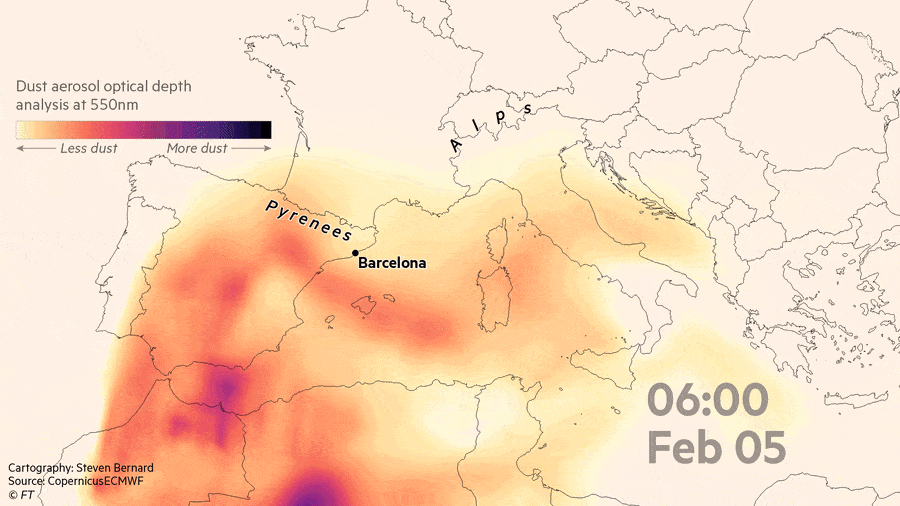[ad_1]

The usually gleaming white snow-capped mountains of the Alps and Pyrenees were tinged orange this week, as a large plume of Saharan dust swept across southern and central Europe in early February.
The dust plume emanated from sandstorms in northern Algeria between February 5 and February 8 and were carried north on southerly winds before being deposited across Europe.
Barcelona was the most affected of the 50 cities monitored across Europe by the Copernicus Atmosphere Monitoring Service.
It recorded a sharp rise in inhalable particles of up to 10 microns in diameter (PM10) at concentrations of 60 micrograms per cubic metre on February 6 — well above the six year average for 2015-2020.
The WHO regards concentrations below 50 micrograms to be safe.
Normally occurring later in the European spring, the event deposited considerably larger quantities of dust particles than the average for this time of year.

It was forecast several days earlier by Copernicus, which provides global and regional forecasts of the amount and location of pollution in the atmosphere and near the earth’s surface.
“Our forecasts, even those from Tuesday 2 February, were very reliable in describing the size and extent of the dust plume as well as its development and direction,†said Mark Parrington, senior scientist at Copernicus.
In addition to coating all surfaces with a film of dust, repeated exposure to the airborne particulate matter can cause severe breathing difficulties which scientists believe lead to a higher risk of mortality from Covid-19.


[ad_2]
Source link







